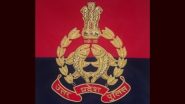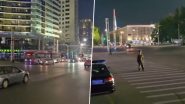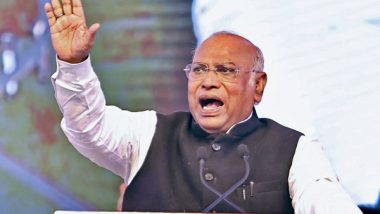New Delhi [India], January 20 (ANI): Congress president Mallikarjun Kharge said that there is no place for the concept of simultaneous elections in a parliamentary system of government while sharing his views on One Nation One Election.
In a letter to the Secretary of the High-Level Committee of One Nation One Election, Niten Chandra, the Congress chief on Friday said that his party is strongly opposed to the idea and it should be abandoned as well as the High Power Committee formed to study it be dissolved.
Kharge said that simultaneous elections go against the guarantees of federalism contained in the Constitution and the basic structure of the Constitution.
"On behalf of the Congress party and the people of the country, I humbly request the Chairman of the High-Level Committee not to allow his persona and the office of former President of India to be abused by the Union Government to subvert the constitution and parliamentary democracy in this country," he stated in his letter.
Kharge said that the holding of simultaneous elections would require the dissolution of several legislative assemblies which are still halfway, or less, through their terms and it would be a betrayal of the electorate in those states.
"There is no place for the concept of simultaneous elections in a country that has adopted a PARLIAMENTARY system of government. Such forms of simultaneous clections that are being floated by the government go against the guarantees of federalism contained in the Constitution," the Congress chief said in his letter.
The Congress president further said that on the question of how to synchronise the terms of state assemblies with the Parliament to implement simultaneous elections in the country, the committee seems to be relying on the Niti Aayog report, which is neither a constitutional nor a statutory body.
"The Niti Aayog maliciously interprets the constitution to state that tenure of a state assembly need not be five years and can be substantially lesser. It suggests that to meet the objectives of simultaneous elections, tenures of some state assemblies including Tamil Nadu and Kerala be curtailed by more than two years, and tenure of state assemblies like Uttar Pradesh and Uttarakhand be extended by more than 2 years. The Constitution nowhere authorizes the Union Government to dissolve the state assemblies or to suspend the state Governments, except under the emergency clauses," Kharge stated in his letter.
Kharge said that the argument that imposition of Model Code of Conduct hurts welfare schemes or development works is also baseless. "Pre-existing schemes and projects continue during elections and in any case, the Election Commission can always approve any disbursements of pre-existing schemes," he added.
The Congress president also added that the argument that the cost of conducting elections is extremely high seems "baseless".
"Considering elections are held once in five years, the expenses make up less than 0.02 per cent of the total Union budget for the preceding five years. When elections are held separately to the state assemblies, the cost of the election is fully borne by the respective states. The expenses for assembly elections may also be a similar percentage of their state budgets," Kharge added.
The Central government constituted a high-level committee, headed by former President Ram Nath Kovind earlier last year to study the concept of simultaneous polls in our country.
The government had also written to six national parties and 33 state parties asking for their suggestions on holding simultaneous elections to the Lok Sabha, state assemblies and local bodies last year. (ANI)
(This is an unedited and auto-generated story from Syndicated News feed, LatestLY Staff may not have modified or edited the content body)













 Quickly
Quickly
















